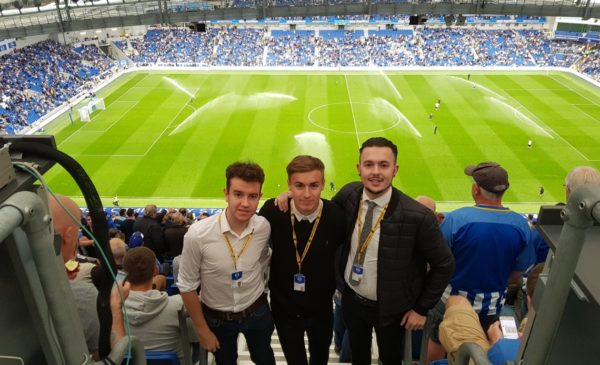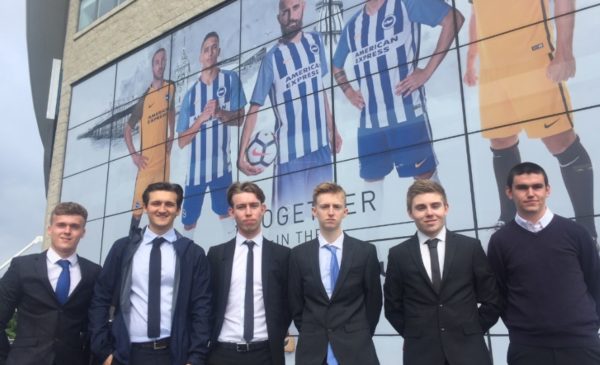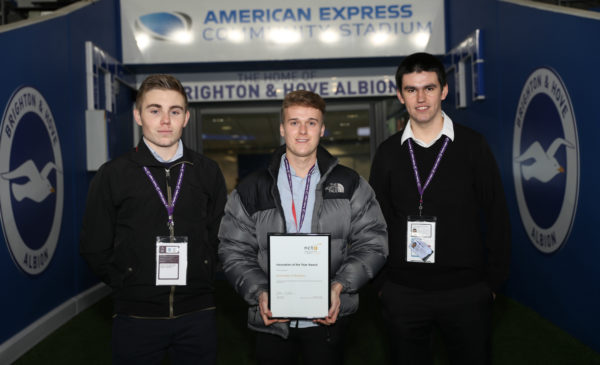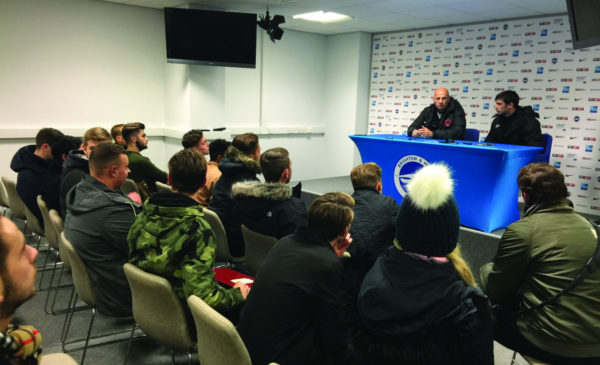LONG READ: Nearly 20 years after an inquest ruled the death of former West Bromwich Albion and England striker Jeff Astle was caused by an ‘industrial disease’, a landmark study by the University of Glasgow categorically proved that professional footballers are more likely to die from neurological disorders. Daniel DeFalco investigates football’s dementia crisis by speaking to those at the centre of an issue which threatens to change the game as we know it.
Embed from Getty ImagesA few minutes into my telephone chat with Dawn Astle, daughter of Jeff, she pauses mid-sentence. “In fact, you’ve just reminded me. On the November 11, 2002, 18 years ago today, we attended the Coroner’s Court in Burton-on-Trent,” she recalls after a brief lull in our conversation.
The newspaper headlines from November 2002 could not have presented the inquest’s findings any clearer. “Heading the ball killed striker,” read The Guardian, while The Telegraph carried the headline, “Jeff Astle killed by heading ball, coroner rules.”
Astle, affectionately known as ‘The King’ by adoring West Brom fans, died aged just 59 in January 2002 after choking on a piece of food while in the late stages of dementia.
He made 361 appearances for the Baggies between 1964 and 1974, scoring 174 goals, and even represented England, but the ruthless effects of neurological disorders do not discriminate.
As the Astles walked out of the Coroner’s Court on that November day 18 years ago, there was not just a sense, but an undoubted dread that a storm was brewing. “My mum said straight away, ‘your dad can’t possibly be the only one’,” says Dawn.
But there were also some green shoots – signs that Astle’s death could pave the way for more research into a possible link between football and brain injury. In 2001, the Football Association (FA) and Professional Footballers’ Association (PFA) acknowledged that heading a football could lead to neurological problems by jointly commissioning a study which tracked 32 professional footballers under the age of 20 over a 10-year period.
In reality, however, the ill-fated study was a sign of things to come for the Astles. None of the players involved in the project had been monitored after five years and some had even dropped out of professional football altogether. To make matters worse, the Astles, initially enthused by the prospect of fresh neurological research, were completely unaware that the study had failed.
“We’re reasonable people and we assumed all these years later that this research was still ongoing because nobody had the decency to ring us up and tell us that it had collapsed,” says Dawn. “That failed piece of research sat in a drawer until we asked where it was, and it was put out to be published virtually 10 years after it ended. If we hadn’t asked where it was, I think it would still be in that drawer.”
The PFA website glosses over the failed 2001 study with a simple three-sentence paragraph. “Unfortunately, due to circumstances beyond our control this study was reduced to a five-year project,” it reads. For Dawn, the fiasco signalled the beginning of the end of her family’s relationship with the PFA – an organisation which bears the brunt of her criticism.
“My family lost all faith with the PFA because this is the kind of issue that warrants their very existence. We lost all faith in their ability to protect their members. My dad died and there could be hundreds of others out there like him, but the PFA, the union meant to support them, the union whose entire existence is about player welfare, had completely failed in their duty to try and find out why.
“In effectively sweeping this under the carpet, the FA and the PFA aren’t only failing my dad and my family, but they’re failing football,” she says.
It was at this point that the Astles decided to take matters into their own hands. The footballing authorities might not have been willing to listen, but Dawn and her family were not going to surrender in their quest for the truth without putting up a fight.
On April 11, 2015, prior to West Brom’s match against Leicester City at the Hawthorns, Dawn appeared on the pitch to launch The Jeff Astle Foundation. As the home side made their way out of the tunnel, wearing a one-off replica strip from the 1968 FA Cup Final when Astle scored the winner, some of his family were moved to tears.
As the topic of our conversation switches to the foundation’s aims, Dawn is able to reel off details of a three-point ‘Game Plan’ without hesitation; a sign of her dedication to the cause. The charity’s 10-year ‘Game Plan’ outlines three objectives: to raise awareness of brain injury in sport at all levels of the game, to work with sports authorities to deliver independent research into the links between brain injury in sport and degenerative brain disease and to provide support for sports people living with the effects of dementia or chronic neurological impairment.
In the months after the foundation’s launch, Dawn began to realise that her mother’s gut feeling after her father’s inquest was turning into a reality. Jeff was not the only former footballer to have suffered neurological decline at a relatively early age. He was the tip of the iceberg.
“Dad’s story had so much media attention that we started to be contacted by so many families of former players with dementia, all in need of support. They needed to be shown that we understood and that we cared,” she says.
The scale of the problem facing football is perhaps best exemplified by the cognitive demise of England’s 1966 World Cup-winning heroes. In total, five of the famous 1966 XI have developed dementia, with four dying from the disease. While this shocking statistic may seem exceptional, it comes as no surprise to Dawn, who has encountered similar stories concerning teams of the 1960s and 70s.
“You can talk about other legends in the game but that team stands alone, except in one regard. To have five players within that 11 diagnosed with dementia might sound staggeringly unusual, but it isn’t within football. There are lots of teams up and down the length and breadth of the country where there are five players of the 11 who have either died of dementia or are living with dementia. In some teams there are six players out of the 11 who have died or who are living in care homes with the consequences of dementia,” she says.
In November 2020 it was announced that Sir Bobby Charlton had been diagnosed with dementia. The news came just four months after his brother and fellow ’66 hero, Jack, lost his battle with the same crippling illness.
Sir Bobby’s wife, Lady Norma Charlton, made the brave decision to share news of her husband’s diagnosis with The Telegraph in the hope that it would help others suffering with dementia.
Dawn believes that public knowledge of Sir Bobby’s diagnosis can only raise the profile of her foundation and emphasise the further work needed to meet its objectives.
“As a foundation, we are so grateful to Sir Bobby’s family for making this public,” she says. “It’s not easy to tell people that your loved one – a much loved husband, dad, grandad, brother – is going through this terrible disease. But, in reality, when families from these iconic teams do speak out in this way, it does provide extra momentum. It does make people sit up and take notice.
Embed from Getty Images“That directly helps the hundreds and hundreds of footballers who weren’t household names, who didn’t have loads of England caps and who may have played in the lower leagues. They are all equally important.”
In October 2019, just over a year before Sir Bobby’s diagnosis was made public, the Astle family’s worst fears were confirmed by a landmark study. A 22-month research project by the University of Glasgow’s Brain Injury Group concluded that former professional footballers are three and a half times more likely to die from neurodegenerative disease than the rest of the population. This included a five-fold increase in Alzheimer’s disease, a four-fold increase in motor neurone disease and a two-fold increase in Parkinson’s disease.
Then FA chairman Greg Clarke gave a typically PR-savvy response to the shocking findings. “It is important that the global football family now unites to find the answers and provide a greater understanding of this complex issue. The FA is committed to doing all it can to make that happen,” he said. It remains to be seen whether the FA – the organisation that kept the Astles in the dark for 10 years about a failed study – will recognise the severity of this wake-up call.
For the Astles, who have been contacted by over 400 families of former players with dementia, it was news they had waited 17 long years for. But from speaking to Dawn, you get the sense that the University of Glasgow’s findings merely marked a new chapter in her struggle to get justice for her father, rather than provide any sort of closure.
“There was no celebrating,” she says. “People said, ‘You must have punched the air, Dawn’ but there was none of that. It doesn’t bring my dad or all those other footballers back.
Thinking of my lovely Dad on what would have been his 79th birthday.
There’s not a single second I don’t think about him and I will miss him always 💔#dementiainfootball #AstleIsTheKing @WBA @Official_NCFC https://t.co/FdbkLq9SVM pic.twitter.com/unj1NKPMei— Dawn Astle (@DawnAstle9) May 13, 2021
“I think the overriding thing was probably the thought that we wouldn’t have to keep justifying to people why we were doing what we were doing. And yet, 12 months on from the publication of FIELD [University of Glasgow study], I’m still doing it.”
Since The Jeff Astle Foundation was launched in 2015, Dawn has had to contend with a minority of football purists who believe that the beautiful game should not be messed with, even in the interest of safety. But this is not a woman who wants to reinvent the wheel.
“I love football and I don’t want to change it massively,” says Dawn. “I don’t want heading banned because you can’t eliminate all risks. But wanting risks sensibly mitigated and for former players and their families to be properly supported – for me, isn’t asking for much.
“Football has a major issue and, whether it finds it uncomfortable or unsettling, it’s real and it has to deal with it.”
“Head injury in sport, and its associated immediate and long-term risks, is really a major public health issue”
Dawn Astle, co-founder of The Jeff Astle Foundation
For the 13 years following Jeff’s death, until the launch of The Jeff Astle Foundation in 2015, the Astle family felt like their calls for action were falling on deaf ears. But there are now signs that the tide is beginning to turn. The footballing world has started to listen and, perhaps more importantly, act.
On November 20, 2020, the PFA issued a statement calling for professional clubs to reduce and monitor heading within training sessions. Chief Executive Gordon Taylor gave an uncharacteristic ultimatum, saying: “In the short-term, football cannot carry on as it is. There is a big issue here, and based on the increasing evidence available, it is clear we need to take immediate steps to monitor and reduce heading within training.”
Several weeks before this guidance was issued by English football’s trade union, Leiston FC, a club playing in the Southern League Premier Division Central, the seventh tier of English football, were already drawing up a campaign to tackle football’s proven link with dementia.
🚨🗣️ Leiston FC are proud to join the important campaign to tackle #DementiaInFootball🔵💙 @chris_sutton73@SuffolkFA@JeffAstleFdn
Details to follow on websiteOfficial Club Statement Below ⬇️⬇️⬇️⬇️⬇️⬇️ pic.twitter.com/ilL9ls7Gcg
— Leiston FC (@leistonfc) November 21, 2020
“Why wait?,” says Leiston’s joint manager, Chris Wigger. “I’ve seen the devastation that dementia can cause, so why would you not want to stop or curb that if you’ve got influence over a local football club?”
After just two days’ worth of WhatsApp conversations between Wigger and his colleagues, the club had created six procedures to combat head injury. These included an education programme for staff and players, steps to minimize heading in adult training and a complete ban on headers in youth training.
Wigger believes that in his role as joint manager he has a responsibility to proactively design his training sessions to be as safe as possible. But he insists his working practices will undergo evolution, rather than a revolution.
“As a senior team playing at this level, there is a need to practice set pieces. But that is more about what positions you take up and what area you’re putting the ball into. That can all be done in a dressing room environment or walked through on the pitch. Of course, in an ideal world you sling 50 balls into the box, but we’re talking about something pretty serious here, so we’ll make adjustments and learn to do it another way.”
There is mounting evidence to suggest that heading a football does lead to an increased risk of developing neurodegenerative disease in later life. In 2017, the findings of a study which followed 14 former footballers suffering with dementia from 1980 to 2010 were published. Post-mortem examinations of the participants discovered four cases of chronic traumatic encephalopathy (CTE) – a progressive brain condition usually associated with boxers. However, as with the University of Glasgow’s 2019 FIELD study, the 2017 report failed to establish the reason for an increased risk of brain injury among former footballers.
Non-league football is known and loved for its rough and tumble style, but head injury is often a by-product of players giving their all for the shirt. There is disappointment in Wigger’s voice as he speaks of an incident involving centre-back Adam Bailey-Dennis, who played on after a nasty head clash in a recent reserve team match, despite suffering vomiting and blurred vision in the dressing room at half time.
“The guy clearly had concussion – he shouldn’t have continued the game,” says Wigger. “It was the one occasion this season where we didn’t have a physio with the reserve team. If we were able to educate the staff that were there with an online video or an online training course, rather than having to rely on the physio, that guy wouldn’t have played football in the second half.”
Like so many others who have taken it upon themselves to raise awareness of the link between football and dementia, Wigger’s motivation is fuelled by a personal story. During his time spent with Norwich City’s academy as a child, Wigger was coached by Mike Sutton.
Sutton, who was the father of former Premier League winner Chris, played professionally for Norwich, Chester and Carlisle United before retiring and moving into coaching. After a decade-long battle with dementia, Mike died in December 2020. His son, Chris, now a pundit, is campaigning for the footballing authorities to take the link between football and dementia seriously, which inspired Wigger to take action with Leiston.
“Seeing how his dad went from really fit, physical football coach who had been active his entire life, to a really unwell man, made me want to change how we do things at the football club,” he says.
Unlike many families of former players suffering with dementia, Chris Sutton has the platform to make his voice heard. In his first Daily Mail column after father’s death, Sutton concluded by issuing a message which likely touched a chord with families up and down the country. He said: “I can’t change this now. But my dad would want me to push for change for the better where dementia in football is concerned. I know for sure that he would have done.”
With families’ faith in The FA and PFA at an all-time low, it has taken the efforts of two of the UK’s biggest newspapers to hold the footballing authorities accountable for their tepid willingness to investigate the sport’s link with dementia.
In 2016, The Telegraph launched the Tackle Football’s Dementia Scandal campaign. Its goal was an answer to one simple question: “Does playing football increase your risk of dementia and other neurodegenerative diseases?”
After a year of vigorous campaigning by The Telegraph, 2017 saw The FA and PFA jointly commission the University of Glasgow’s FIELD study which produced a shocking answer to our question. Former professional footballers are three and a half times more likely to die from neurodegenerative disease than the rest of the population.
In November 2020, the Daily Mail launched its ‘Enough is Enough’ campaign, which includes seven recommendations for football’s governing bodies to act upon. Mike Keegan, the Mail’s Sports Agenda Editor, announced the campaign and believes the number of neglected former players had reached a tipping point.
Enough is enough. Sportsmail has launched a seven-point campaign calling for football to finally tackle its dementia scandal. Details here: https://t.co/pW8GD6XdhB
— Mike Keegan (@MikeKeegan_DM) November 16, 2020
“It seemed to be that every couple of weeks a former footballer died from dementia,” he says. “We were hearing more and more stories from families who were not getting the support that they should have, predominantly from the PFA. So we just thought, as the headline says, enough is enough.”
In most cases, the ruthless effects of dementia result in the sufferer needing round-the-clock care. As an individual’s ability to perform daily tasks decreases, an increased mental and financial burden is placed on family members, who can often feel helpless as a loved one is slowly eroded away by a cruel disease.
According to the Alzheimer’s Society, the average annual care cost for a person with dementia is £32,250. The PFA has committed to provide funding towards care costs of former players, but until dementia is recognised by the government as an industrial disease, families face an uphill struggle to meet extortionate domiciliary care fees.
“At the back of everyone’s mind will be the fact that this is going to cost somebody some money,” says Keegan. “If dementia is recognised as an industrial disease, then that opens the door for scores of compensation claims. Is that compensation claim then going to be against the FA or the club itself because they were the employer?”
“At the moment, the government is saying they don’t have enough evidence to recognise dementia as an industrial disease. What may change that are the number of recent inquests where the coroner has returned a verdict of industrial disease. Sadly, it’s only going to gather pace when more people pass away, and we get more verdicts like this.”
Former players are not the only ones to whom the footballing authorities owe a duty of care. In February 2021, the push for improved in-game measures to protect current players from head injuries received a boost when the Premier League announced a trial of concussion substitutes.
The trial, which runs to the end of the 2020/21 season, allows a team a maximum of two concussion substitutes per match. Once a player has been assessed by the team doctor, a decision will then be made regarding their ability to continue. Players substituted due to a head injury will not be allowed to return to the field, regardless of whether symptoms later subside.
But in a time when four of England’s World Cup-winning heroes have died from dementia and a comprehensive study by the University of Glasgow has validated claims that professional footballers are more likely to die from neurodegenerative disease, how can concussion substitutes in the Premier League have an expiry date?
“Why are we trialling this?,” asks Keegan. “What do we need to see or find out? The only reason I can see why you would trial something like this and not bring it in permanently is because of concerns about cheating. But it’s not rugby; you’re not getting hit on the head all the time. If a player goes down pretending they’ve got a head injury then, certainly in the Premier League with all the replays and camera angles, it would be like ‘Where have you got that head injury from?’”
Concern has also been raised regarding the Premier League’s decision for concussion substitutes to be permanent rather than temporary. A recent FifPro poll of 96 professional football club doctors from the English, French and Belgian leagues showed that 83% believe the use of temporary concussion substitutes “would inform an effective part of future protocol”.
In theory, a permanent concussion substitution is the safest way to ensure an injured player’s wellbeing is protected. But in practice, it fails to consider the pressure of in-game situations and determination of players to play through the pain barrier in the heat of the moment. Keegan believes that permanent concussion substitutes could do more harm than good when the stakes are high.
“For example, imagine you’re Harry Kane and it’s the last game of the season and Spurs need to win to qualify for Europe, but you go down in the fifth minute with a head injury. If it’s a permanent concussion substitution, you know that if you go off you’re not going to be able to come back on. So then you’re more likely to say ‘No, I’m fine.’ Whereas if it’s temporary, you take that problem away and the attitude from the doctor is more like ‘We want you to come off so we can have a look at you, and then if everything is fine you can go back on.’ I think a lot more players would be willing to do that.”
“All the experts we speak to say that temporary, rather than permanent concussion substitutions are the way forwards”
Mike Keegan, Sports Agenda Editor at the Daily Mail
One such study is already underway at the University of East Anglia (UEA). Launched at the start of 2020, the Screening Cognitive Outcomes after Repetitive head impact Exposure in Sport (SCORES) Project aims to improve understanding of the cognitive health of former footballers as they age. By comparing the rate of cognitive decline in ex-professionals to that of average healthy people, the study hopes to predict brain degeneration for former players of the future.
Ellen Boucher, a PhD student, is one of four researchers working on the SCORES Project and says that while some former players are apprehensive about the long-term effects of their playing days, there is not yet enough field research to draw conclusions.
“We know from our participant group that we have people who have expressed concern about their brain health and quite a few of our group are involved in our study because they are concerned.
“At the moment, it’s not a case of saying, ‘How concerned should I be?’. At this point, it’s more about further investigation into the issue. While the FIELD study [by the University of Glasgow] was a big study in our area, there’s still a lot to be learnt before we can start making estimations of how this will affect people in their later life,” she says.
The SCORES Project aims to shed light on neurological degradation in former sportsmen and women over 40, but little credible research exists surrounding the long-term impact of head injury on juvenile football players. Children are vulnerable and their health and wellbeing is rightly protected in many other areas of society, but is enough being done to safeguard them from head injury while playing football?
In February 2020, in response to the University of Glasgow’s landmark FIELD study, the English, Scottish and Northern Irish FAs banned heading in training for under-12s. Mark Bullingham, the FA’s new chief executive, said: “This updated heading guidance is an evolution of our current guidelines and will help coaches and teachers to reduce and remove repetitive and unnecessary heading from youth football.”
Overtime approached the Welsh FA for comment on its decision not to implement the updated heading guidance for under-12s but received no response.
Boucher believes that while the tentative steps taken by three of the UK’s FAs to mitigate head injury in children are positive, it could be a while before the professional game follows suit.
“I hesitate when people ask whether or not we should be changing the game at professional levels,” she says. “It is important that in children we take it very seriously because children’s brains are still developing, and we don’t exactly know how this can affect them in the long term. With adults, it’s a case of needing to look further into the issue and collecting data on when people started playing, how long they played for and then looking at how that can affect their brain health in later life.”
You would do well to find a contact sport with no risk of physical injury to participants. In the UK, where, according to the Royal College of Paediatrics and Child Health, one in three children are obese by the age of nine, youth football participation plays a key role in keeping the nation’s youngsters healthy. There is no denying that the University of Glasgow’s FIELD study did raise some frightening correlations between brain injury and football participation, but Boucher urges parents to think twice before preventing their child from playing the game.
“It’s interesting because, while football has this black mark on it now from these studies saying that head injury might be an issue, participation in team sports at a young age is important in preventing other health issues. For girls in particular, participation in sport in their teenage years can be linked to a reduction of developing osteoporosis in later life. Participation also builds self-esteem and is great for mental health, so it’s a difficult one for parents to make a decision based on the research that’s out there at the moment,” she says.
According to The FA’s State of the Game report, there are currently 3.35 million children aged five to 15 participating in football in England. Many of those will dream of playing professionally at the highest level. That dream came true for Jeremy Goss, who made 84 Premier League appearances for Norwich between 1992 and 1995, scoring nine goals.
Embed from Getty ImagesGoss was part of a side that finished third in the Premier League’s inaugural season and later scored a famous volley to help Norwich to a famous victory against Bayern Munich in the UEFA Cup. The midfielder was a key player during Norwich’s most famous era and his performances brought smiles to many faces. But now, nearly 30 years later, he wants to know whether all those happy memories could have left a stain on his long-term health.
Goss has signed up to the UEA’s SCORES Project and will undergo a series of tests every six months to spot early signs of neurodegeneration. The 56-year-old explains it was an easy decision to participate in the study.
We also gave a warm welcome to former footballers Iwan Roberts (@iwanwroberts) and Jeremy Goss (@11Gossy) – who are both taking part in our study @ProjectScores – on campus on Friday.
Find out more about the study here: https://t.co/nM7o90ceF4 #ThinkingWithoutBorders pic.twitter.com/RIReAelqzk
— UEA (@uniofeastanglia) February 24, 2020
“I wanted to get behind a project like the one Dr Michael Grey [lead researcher] has started because the issue is real and it has an effect on people’s lives going forward, in terms of identifying risks,” he says. “I had no problem getting involved and offering my knowledge of the game and experiences of heading the ball and body contact.
“On a personal front, it’s good that I can go through a series of assessment programmes and if there’s anything in the analysis that shows neurodegenerative symptoms coming my way, I want to know about it. I want to be prepared for it and make plans going forward to deal with it, in terms of family and finance.”
For many families of former players suffering from dementia, the heavy brown leather balls used up until the late 1960s are the biggest factor in football’s heading crisis. According to a 2016 issue of science magazine Acta Neuropathologica, 450g balls used prior to the 1980s became 25% heavier when wet. Goss admits that even in the late 1980s, the start of his career, a combination of poor ball quality and heading-oriented training sessions is a reason to look back with concern.
“When I first came into football we used to train with very hard, brittle Mitre footballs. The training was constructed where, it didn’t matter who you were, you were practising a lot of heading. Whether you were a centre forward or a defender, crossing and finishing was on the agenda for every single player. We also regularly practised heading the ball from a goalkeeper’s drop kick. At the time, ‘keepers weren’t playing out from the back – they were just delivering it high in the sky, so it was coming down fast and heavy.”
Goss has first-hand experience of the merciless effects of dementia. The former player now works for Age UK in Norwich, a charity which provides assistance for Norfolk’s elderly and vulnerable citizens. He is reminded daily of the potential consequences which may occur as a result of his playing days, but the softly-spoken ex-professional is level-headed about what the future might hold.
“I’m not looking back and suddenly thinking doom and gloom. I’m just really interested in what this study will result in,” he says. “This [taking part in the SCORES Project] is absolutely not a finger-pointing exercise or a blame game. It’s about how we can help the next generation by going through this study and coming up with results, analysis and recommendations.”
Looking to the future of the domestic game, Goss believes that the risk of brain injury to the next generation of professionals could be minimised by tactical evolution. In a Premier League era influenced heavily by Pep Guardiola’s possession-based style, teams are far less likely to use direct goal kicks or launch the ball into the box, resulting in fewer aerial duels. In 2019, this newspaper reported that an average of 38.2 open play crosses were put into the box per-game in 2008/09, which plummeted to 24.2 for the 2018/19 season.
“Coaches will be determined that their team, at whatever age group, develops a passing style. Naturally, the ball is going to go up in the air at some point and there will be opportunities to head the ball, but it’s about how you practise for those instances.”
From Pele against Italy at the 1970 World Cup to Robin van Persie against Spain in 2014, headed goals make up some of the most iconic moments in football history. For Goss, someone who has played the game at the highest level, the risk of heading a ball should be mitigated, not eliminated.
“I can never see it changing where heading is stopped in games of football,” he says. “That’s a ludicrous idea and hopefully it’s miles down the line if it does happen. Where we are today, it’s up to coaches to be sensible in the way they construct their training sessions.”








